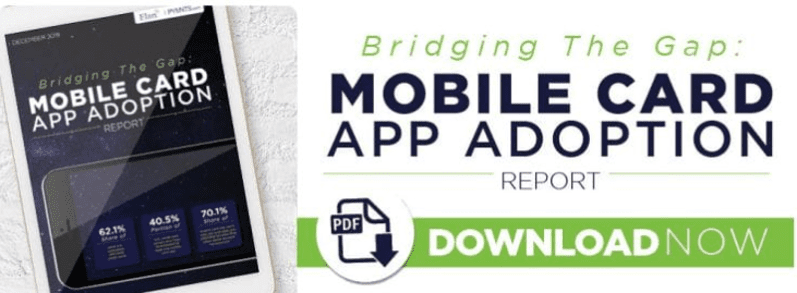Helping FIs Develop Their ‘FinTech Sense’

Everyone knows that digital and mobile services are key to success in the 2020s — not only in terms of more revenue, but also larger transformations. But that doesn’t mean all the players in payments and financial services have a solid or clear digital strategy.
The problem can be especially acute when it comes to financial institutions (FIs), said John Owens, general manager of Elan Credit Card, in a new podcast interview with PYMNTS. It’s not that banks don’t want to go more digital and mobile, he said. The problem often stems from the environment in which they are operating — one that can put the brakes on innovation, even when innovation is key to thriving.
“Traditional financial institutions are not exactly known for their agility,” he said. But that’s not the whole story, of course. “They are heavily regulated and require heavy investment,” both in terms of capital and human resources. “It takes time and it takes capital [to go deeper into digital],” he continued. “It requires a commitment to fundamentally shift those resources to a new approach.”
But such shifts must happen, lest those banks get left behind. As PYMNTS research has confirmed, the younger generation is markedly embracing the use of mobile card apps for banking. As spotlighted in the Mobile Card App Adoption report, almost 30 percent of Gen Z consumers believe fingerprint-based login is the most important feature in a mobile card app, while 15 percent of those aged 55 and older say the same. The age of personalized service is upon us.
Younger Consumers
That’s hardly the only factor in play when it comes to getting FIs to become even more digital and mobile. Gen Z is growing up. The oldest members of the generation born between the mid-1990s and the mid-2010s (specific year ranges vary depending on who is supplying the figures) are graduating from college, getting their first jobs and starting to form relationships with credit products — all of which provide opportunity for banks and credit unions.
Peer-to-peer (P2P) payments and mobile wallets, among other payment methods, are gaining traction among Gen Z consumers, which means banks, credit unions and players in the payments space need to step up their game to best serve those younger shoppers and financial services users.
Indeed, some 75 percent of Gen Z consumers use P2P products every month. And as PYMNTS has reported, P2P services such as Venmo and Zelle continue to grow and expand into new and value-added services.
All of those trends essentially leave FIs with one major, overriding question when it comes to crafting a better digital strategy for the coming years. As Owens put it during the PYMNTS podcast discussion, referring to the services that underlie those efforts, “Do you buy it, build it yourself or partner with somebody?” If it’s the latter — or some combination of the latter — that means working with FinTechs or other financial services players that are not traditional FIs.
Owens noted that Elan aims to improve the customer experience by providing mobile functionality, geolocation, AI-based fraud protection and all forms of digital payments. “These are expensive to deliver, which is why we help customers provide these services and capabilities as part of the package,” he said.
Of course, those digital strategies that FIs are (or should be) working on in 2020 can involve a variety of features, tools and offerings. But one thing is pretty much non-negotiable, Owens said: making a good first impression. And that means focusing on that part of a website or mobile offering that serves as the first point of engagement with customers. And it also means removing as much friction as possible from mobile banking and financial services.
Outside Standards
In general, FIs are not doing a supreme job with that last part.
“As an industry, we have to do a much better job of removing friction from the consumer experience, just as Uber removed friction [from its transactions],” noted Owens.
That seems obvious – Uber has raised the bar for pretty much everyone in payments, just as Amazon has done in retail – but that also leads one to wonder if the Uber experience will necessarily translate to financial services, which has its own concerns about security and other areas. Owen said that’s just the reality – even online and mobile mortgage services are becoming all but instant, allowing such conveniences as pre-filled forms to save consumers time and hassle.
There is also another aspect to the Uber angle when it comes to better mobile and digital banking, one that is just another part of the reality in 2020 for financial institutions. “Expectations for digital services aren’t being shaped by our industry,” Owens told PYMNTS. “The benchmarks are being set by non-banks.”
That could change with time and much effort, perhaps. But if not, it sets out part of the challenge that FIs face when trying to win over new customers and keep a tight hold on the ones they already have.
